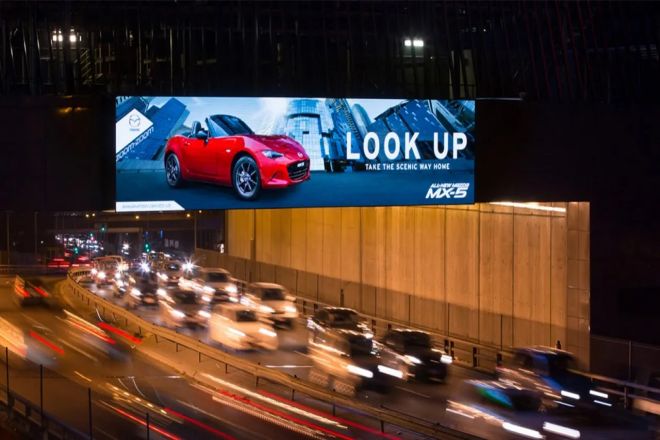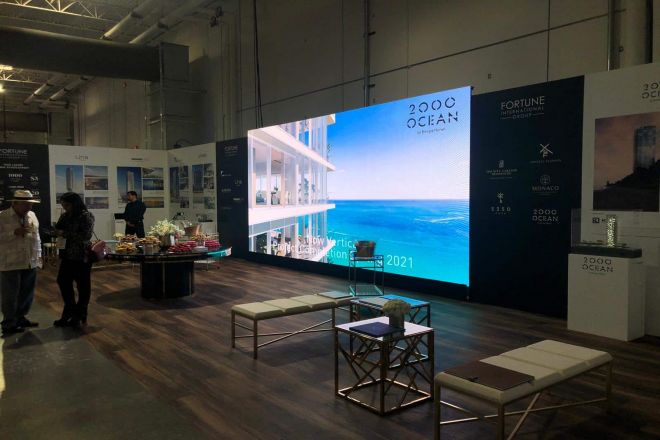Introduction

In the vast universe of science and technology, display technology has always been an important force leading the visual revolution. From the early cathode ray tube (CRT) to today’s liquid crystal display (LCD), every technological leap has greatly enriched people’s visual experience and promoted the rapid development of the information society.
However, with the continuous advancement of science and technology, LED (light-emitting diode) display, as a representative of the new generation of display technology, is quietly changing the pattern of the display market with its unique advantages.
1. Comparison of LCD and LED display technology
1). Technical principle
- LCD (liquid crystal display):
Imagine that you have a piece of transparent plastic in your hand, which is filled with small liquid particles (liquid crystal). When you shine a light on it, by controlling the arrangement of these liquid particles, you can let the light pass or block the light, thereby displaying the image.
This is how LCD screens work, but it uses many such small particles (pixels) to combine to display the entire picture.
- LED (light-emitting diode) display:
LED is a small light bulb that emits light, and each LED can emit light of different colors.
The LED display is arranged with many small bulbs (LED beads) like this, each of which can independently control the brightness and color, and when combined, it can display very bright and clear images. Moreover, these LED beads are self-luminous and do not need an additional light source like LCD.
2). Display effect
- Color, contrast, and brightness:
The color of the LED display is more vivid because it can directly emit light of various colors. Although LCD can also display rich colors, it is softer in comparison.
LED also has a higher contrast, with black parts being blacker and white parts being brighter. In terms of brightness, LED can be adjusted to be very bright as needed, which is suitable for use outdoors or in places with strong light.
When looking at LED displays from all angles, the color and brightness are similar, while LCD screens may see the color fade or darken at certain angles.
3). Energy consumption and environmental protection
- Energy consumption:
LED display is more energy-saving than LCD. Because LED is self-luminous and has high luminous efficiency, LED consumes less electricity at the same brightness.
- Environmental protection:
Although both LED and LCD contain some materials that are not good for the environment, more and more manufacturers are now working hard to improve and use more environmentally friendly materials.
Moreover, when these displays are no longer in use, they also need to be properly handled to avoid environmental pollution. However, from the perspective of energy consumption, LEDs are more energy-efficient, so they have less impact on the environment during use.
2. Technological innovation, the driving force of market growth for LED displays

- Miniaturization and high-integration technology:
With the advancement of science and technology, the manufacturing technology of LED displays is also constantly innovating. Miniaturization technology makes the size of LED lamp beads smaller and smaller, which means that more LED lamp beads can be accommodated in the same area, thereby improving the resolution and fineness of the display.
At the same time, the development of high-integration technology makes the circuit design and control system of LED displays more compact and efficient, reduces energy consumption, and improves overall performance. These technological innovations make it possible for LED displays to be used in more fields.
- Continuous performance improvement:
In addition to miniaturization and high-integration technology, LED displays are also continuously improving in key performance indicators such as display resolution and refresh rate.
High resolution means that the picture is more delicate and clear, and can show more details; a high refresh rate can reduce the phenomenon of image smearing and blurring, and improve the smoothness of dynamic pictures.
These performance improvements make LED displays more competitive in scenes that require high-quality display, such as video playback and game entertainment.
1). Application scenario expansion
- Wide application in traditional fields:
LED display screens have been widely used in commercial advertising, sports events, large outdoor screens, and other fields. In commercial advertising, LED display screens have attracted a lot of attention with their bright colors and flexible display methods.
In sports events, large LED display screens have become an important medium for live audiences and TV viewers to enjoy the game; in the field of outdoor large screens, LED display screens have become an important part of the urban landscape with their high brightness and wide viewing angle characteristics.
- Development of emerging markets:
In addition to traditional fields, LED display screens are constantly exploring new application markets. With the growth of home entertainment demand, LED display screens have begun to enter family living rooms, bedrooms, and other spaces, providing users with a more immersive viewing experience.
At the same time, in-vehicle display is also an important development direction for LED display screens. With the popularization of autonomous driving technology and the improvement of automobile intelligence, LED display screens have broad application prospects in in-vehicle entertainment, navigation, and other aspects.
2). Policy support and industry standards
- Government incentive policies:
In order to promote the development and application of energy-saving and environmentally friendly technologies, governments of various countries have introduced a series of incentive policies.
These policies not only provide financial support for the research and development and production of energy-saving and environmentally friendly products such as LED display screens but also reduce the production costs and market risks of enterprises through tax incentives, subsidies, and rewards.
In addition, the government has also improved the public’s awareness and acceptance of energy-saving and environmentally friendly technologies such as LED displays through demonstration projects, publicity, and promotion.
- Formulation and promotion of industry standards:
In order to regulate market order, improve product quality, and promote technological innovation, relevant international and domestic institutions and organizations are also constantly formulating and improving technical standards and testing and certification systems for LED displays.
These standards and systems not only provide scientific basis and technical guidance for product design, production, and sales but also provide consumers with more reliable product selection and protection.
At the same time, the formulation and promotion of industry standards also promote cooperation and exchanges between enterprises and promote the healthy development of the entire industry.
3. Why will LCD be replaced by LED displays?
The trend of LCD (liquid crystal display) being replaced by LED displays does not mean that LCD is completely replaced by LED screens, but that LED backlight technology or LED displays have significant advantages over traditional LCDs in some aspects, thus gradually occupying a dominant position in specific fields. Here are several main reasons:
1). Technical advantages
- Self-luminous principle:
LED (light-emitting diode) is self-luminous, while LCD itself does not emit light, and a backlight module is required to illuminate the LCD panel.
LED backlight technology makes the screen brighter, and more colorful, and can provide a wider viewing angle and higher contrast. With the development of emerging technologies such as Micro LED, the resolution, refresh rate and color performance of LED displays will be further improved.
- Higher energy efficiency:
LED light sources have higher energy efficiency than traditional LCD backlight sources (such as CCFL cold cathode fluorescent lamps). LED backlight screens can operate at lower voltages, thereby reducing energy consumption, which is particularly important for application scenarios such as mobile devices and outdoor large screens.
- Longer service life:
The service life of LED light sources is generally longer than that of LCD backlight sources, which means that LED displays are more reliable in long-term use, reducing replacement costs and maintenance work.
2). Application scenario expansion
- Outdoor large screens and advertising screens:
LED displays are very suitable for outdoor large screens and advertising screens due to their high brightness, wide viewing angle, and strong weather resistance. Under direct sunlight, LED displays can still maintain a clear display effect, while traditional LCD screens may affect the viewing experience due to reflections or insufficient brightness.
- Commercial and educational markets:
With the popularization of small-pitch LED technology and the reduction of costs, LED displays have gradually penetrated into the commercial and educational markets. Its high definition, high contrast and rich colors make LED display screens widely used in conference rooms, classrooms, exhibition halls, and other places.
3). Policy support and market demand
- Policy support:
In order to promote the development and application of energy-saving and environmentally friendly technologies, governments of various countries have introduced a series of encouraging policies.
These policies provide financial support and tax incentives for the research development and production of energy-saving and environmentally friendly products such as LED display screens and promote the rapid development of the LED display screen market.
- Market demand:
With the improvement of consumers’ requirements for display effects, energy conservation, and environmental protection, LED display screens have gradually become the mainstream choice in the market.
Especially in the fields of high-end TVs, monitors, mobile phones, etc., LED display screens have won the favor of consumers with their excellent performance and display effects.
4). Cost reduction and technological innovation
- Cost reduction:
With the rapid release of LED chip production capacity and the increasing maturity of packaging technology, the cost of LED display screens has gradually decreased. This makes LED display screens more competitive in price and further promotes its application in various fields.
- Technological innovation:
Technological innovation is an important driving force for the development of LED display screens.
With the emergence and development of emerging technologies such as Micro LED, LED display screens will achieve greater breakthroughs in resolution, refresh rate, color performance, etc. This will further consolidate the leading position of LED display screens in the display field.
In summary, the trend of LCD being replaced by LED display screens is mainly due to the combined effect of multiple factors, such as the technical advantages of LED display screens, expansion of application scenarios, policy support, and market demand, as well as cost reduction and technological innovation.
However, this does not mean that LCD will completely withdraw from the market; rather, the two will coexist and develop in different fields and scenarios.
4. What problems may arise in the process of replacement?

In the process of LCD being replaced by LED display screens, a series of problems may arise, which involve multiple aspects such as technology, market, environmental protection, and policy. The following is a detailed analysis of possible problems and their solutions:
1). Technical-level problems and solutions
1.1). Technical bottlenecks
- Problem description:
LED display screens may have technical bottlenecks in the manufacturing of tiny LEDs and color consistency, which will affect the display effect and cost.
- Solution:
Increase R&D investment, promote technological innovation, and improve the manufacturing technology and efficiency of tiny LEDs.
Introduce advanced calibration and detection technology to ensure the color consistency of each LED lamp bead and improve the overall display effect.
Strengthen cooperation with scientific research institutions, universities, etc., to jointly overcome technical difficulties.
1.2). Cost Control
- Problem description:
The initial investment cost of LED display screens is high, which may affect its popularization speed.
- Solution:
Reduce manufacturing costs through large-scale production.
Optimize supply chain management to reduce raw material procurement and logistics costs.
Promote cost-effective products to meet the needs of different consumers.
Problems and solutions at the market level
1.3). Market acceptance
- Problem description:
Consumers are not aware of LED display screens enough, and market acceptance needs to be improved.
- Solution:
Strengthen market promotion and publicity to improve consumers’ awareness and understanding of LED display screens.
Carry out experience activities to let consumers experience the superior performance of LED display screens in person.
Cooperate with well-known brands to enhance product image and brand influence.
1.4). Application field expansion
- Problem description:
The application of LED display screens in some application fields has not yet been popularized.
- Solution:
Develop customized and differentiated LED display screen products according to the needs of different application fields.
Strengthen cooperation with upstream and downstream enterprises in the industrial chain to jointly expand application fields and market space.
Pay attention to the development trends of emerging application fields, plan ahead, and seize market opportunities.
Problems and solutions at the level of environmental protection and sustainable development
1.5). Waste disposal
- Problem description:
Abandoned LED display screens may pollute the environment.
- Solution:
Establish a sound waste recycling and treatment mechanism to ensure that waste LED display screens are properly handled.
Promote environmentally friendly materials and technologies to reduce waste generation and pollution.
Strengthen cooperation with environmental protection departments and related enterprises to jointly promote the development of environmental protection.
1.6). Energy efficiency improvement
- Problem description:
Although LED display screens are better than LCDs in energy efficiency, they still need to be further improved.
- Solution:
Develop more efficient LED drive circuits and optical systems to improve the efficiency of light energy conversion.
Optimize the design and manufacturing process of LED display screens to reduce energy consumption and heat generation.
Promote intelligent dimming and energy-saving control technology to adjust brightness and power consumption according to actual needs.
Problems and solutions at the policy and regulatory level
1.7). Regulatory restrictions
- Problem description:
Different countries and regions may have different import and export policies, safety standards, etc., for LED display screens.
- Solution:
Pay close attention to domestic and foreign policy trends and regulatory changes, and adjust market strategies and product layouts in a timely manner.
Strengthen cooperation and exchanges with international standards organizations to promote the formulation of more scientific and reasonable standards and specifications.
Strengthen compliance management and risk control to ensure that products meet relevant regulations and standards.
Conclusion
As LED display technology continues to mature and become more popular, we have reason to believe that it will fully lead the new trend of the display market in the near future. From commercial advertising to home entertainment, from outdoor large screens to car displays, LED displays will profoundly change our lifestyle and visual experience with their excellent performance and broad application prospects.
Of course, the rise of LED displays does not mean the end of LCD technology. On the contrary, in the face of market changes and challenges, LCD manufacturers are also actively seeking technological innovation and transformation and upgrading to adapt to new market demands.
Whether it is LCD or LED, the competition and cooperation between the two will drive the entire display industry forward and bring consumers a more colorful, efficient, and energy-saving visual feast.
Finally, if you want to know more about LED displays, please get in touch with us.
